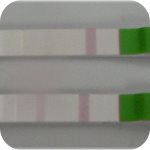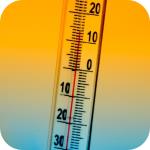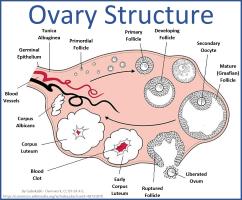
(Click to Enlarge)
The Fertile Window is the 5 most fertile days in your menstrual cycle and having sex on these days gives you the highest chance of getting pregnant. These 5 days are the ones that lead up to ovulation.
Unfortunately, not every woman ovulates on a particular day in their cycle, and your ovulation timing can even vary from month to month. So how do you know when this optimum time is? To make matters even harder, the egg only survives for a maximum of 24 hours after ovulation, so getting the timing correct is even more important.
Taking all of this into account, the odds of getting pregnant seem to be stacked against you. However, you can learn to notice the subtle signs that your body produces which tell you that ovulation and your fertile window are approaching. This then allows you to focus sex around this time and get that positive pregnancy test.
I am going to teach you these important signs and symptoms of ovulation, so that you can produce your own accurate ovulation calendar and be aware of the timing of your own fertile window each cycle.
Hormone Changes Around Ovulation
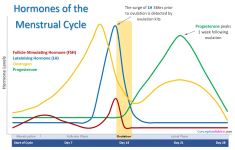
(Click to Enlarge)
Your cycle starts on the first day of your period – day 1. The first half of the cycle leading up to ovulation is known as the follicular phase. This is when the ovaries are maturing the eggs within the follicles, getting ready for ovulation to occur. During this phase of the cycle, the levels of Follicle Stimulating Hormone (FSH) are high, to help with this process. The follicles produce oestrogen, so these levels rise as the follicular phase progresses.
Throughout this phase, the levels of Luteinizing Hormone (LH) are gradually rising. As it reaches its peak, it triggers ovulation to occur, which tends to occur 12 – 24 hours later.
The second half of the cycle is known as the luteal phase. During this phase, the levels of oestrogen drop, and the predominant hormone is progesterone. This continues to be the main hormone until the end of the cycle, when your next period starts.
You can read more about the menstrual cycle and learn about the possible changes which may affect your fertility by checking out the section: Menstrual Cycle Calendar and Phases
If you want to read more about the menstrual cycle and learn about the possible changes which may affect your fertility, click here.
When Does Ovulation Occur?
The average menstrual cycle is said to be 28 days long. However, this does vary from woman to woman, and if your cycle is not this length, it does not necessarily mean that you have fertility problems. The normal range is between 23 – 35 days. Ovulation occurs roughly midway through the cycle, which is around day 14 if you have a 28-day cycle. But, if you have a 35-day cycle, it is more likely to be around day 21. To complicate matters further there are various factors which can affect the length of your cycle and which can cause you to have variations in the length of each half of the cycle. This all means that predicting ovulation simply by looking at a calendar is not accurate, therefore it is vital to get to know your own cycle well.
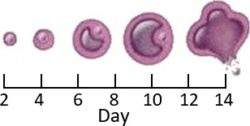
It is also important to be aware that you may not ovulate every month. This also does not necessarily mean that there is an underlying fertility problem, but by knowing the signs of ovulation, this can help you recognise the months where ovulation has occurred and the months when it hasn’t.
Signs of Ovulation
So, what are these all-important signs of ovulation? I’ll go through them all in more detail, but here is a list of the most useful signs and symptoms to start off with:
- Pelvic discomfort or pain
- Thin, stretchy cervical mucus
- The cervix is high and soft, and slightly open
- A drop in basal body temperature
Pelvic Discomfort or Pain
This is sometimes referred to as Mittelschmerz – a German word which translates to mean “middle pain”. This is felt by some women at the time of ovulation, usually on the side from which the egg has been released. It typically will last only a day or so, and is mild and crampy in nature. The pain is thought to result from the egg bursting from the follicle at ovulation.
This pain is only regularly felt by about 20% of women however, and its absence is not a sign that ovulation is not happening. The discomfort can also be confused with other aches or pains, such as from the bowel or muscles, so by itself is not necessarily a reliable sign of ovulation.
The onset of this pain also can vary slightly. It is not felt immediately at the time of ovulation, and may be felt several hours later. It is not therefore advised to use this sign as a signal to have sex, as by that time it may be too late and the egg will have passed.
Change in Cervical Position
Approaching ovulation, the cervix moves up the vagina until it is relatively high and sometimes difficult to reach and feel. The texture becomes softer, and you may feel that the cervix has a small opening to it, such that it can admit the tip of a finger. These changes help the sperm to enter the uterus easily through the cervix.
You can learn about the optimum cervical position and texture in the section: Cervix Position During Ovulation
Change in Cervical Mucus
Typically, as you are approaching ovulation your cervical mucus changes. It starts to become stretchy and clear, and is sometimes compared to raw egg white. This is as a result of the high oestrogen levels prior to ovulation. This stretchy mucus provides an ideal environment for the sperm to swim in, encouraging them on their journey through the cervix, into the uterus and up the Fallopian tubes.
Learn more about cervical mucus changes and how to identify the most fertile type in the section: How to Check Your Cervical Mucus for Signs of Ovulation
Drop in Basal Body Temperature
At ovulation, your basal body temperature is at its lowest. Once ovulation has occurred, the predominant hormone in the cycle changes from oestrogen to progesterone. Progesterone causes an increase in body temperature, to prepare a fertilised egg for implantation and pregnancy. Therefore, as soon as ovulation has occurred, your temperature starts to rise.
Unfortunately, this sign cannot really be used as a predictor of ovulation, as by the time your temperature has risen (and therefore you become aware of when the lowest temperature point occurred during your cycle), then ovulation has already happened and it is too late to time sex for that cycle. However, charting your temperature is a great way of getting to learn your cycle and when ovulation tends to occur for you each month.
Learn how to monitor basal body temperature and how it is used to identify your ovulation time in the section: How To Measure Basal Body Temperature
Other Signs
Some women experience other signs of ovulation as well, but these tend to be less obvious and less reliable from cycle to cycle. It is useful to listen to your body and be aware of any signs or symptoms that you may experience, and use this as part of your charting process.
These signs can include:
- Spotting – where a small amount of blood is passed following ovulation. This is very light, and not usually sufficient to need to wear a pad. It is caused by the sudden drop in oestrogen at ovulation, which causes slight blood loss from the lining of the uterus
- Increased Libido
- Increased Energy
- Breast Tenderness or Discomfort – usually mild only
- Water Retention and Abdominal Bloating – usually mild and short lived
Role of Charting to Help Determine Ovulation
Each of these ovulation signs on their own may not be sufficient for you to identify when ovulation is occurring. It is when you put all of the signs together that you can properly analyse and interpret what is happening in your cycle. This is done using the help of a fertility chart. These charts display all of the information in a simple way to allow you to know what is happening at what point of your cycle.
Learn more about fertility charting in the section: Fertility Charting – Fertile Window Calculator
Ovulation prediction kits
There are also products on the market which help you to determine when ovulation is happening for you. There are two main types – urinary and salivary. They vary in their complexity and price, and can be useful in identifying your fertile window.
A word of caution however, they are most effective in women who have regular ovulatory cycles. In women with PCOS, or irregular cycles they may not be particularly accurate as the hormones that they are trying to identify may not be produced in sufficient quantities for the kits to detect. This can then mislead you to think that you are not ovulating, when in fact you are! This is where identifying your other ovulation signs is of use. However, if you don’t like the idea of messing around with thermometers or your cervical mucus in order to produce a fertility chart, then you may find ovulation kits beneficial.
Links to Popular Related Pages


